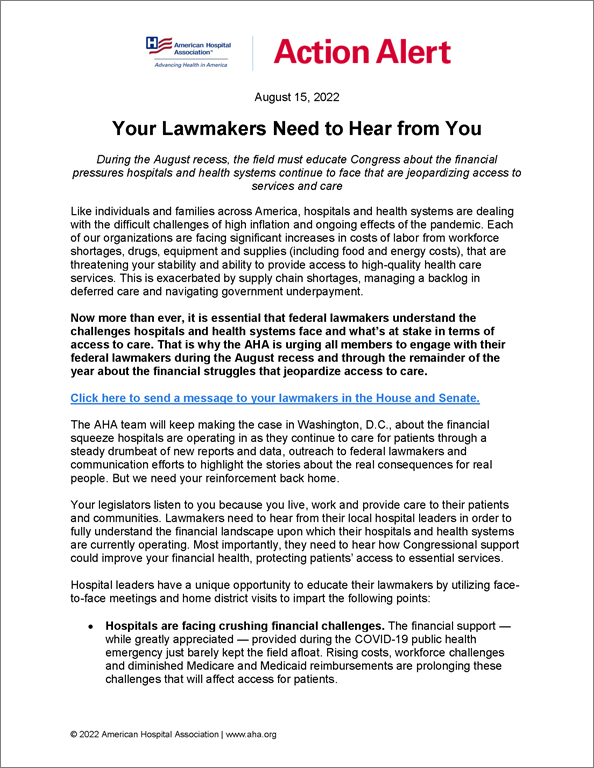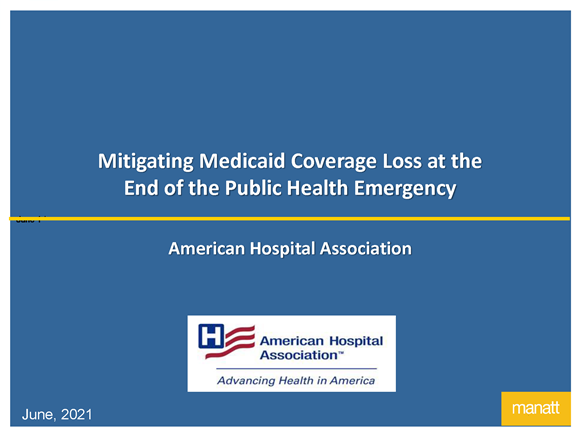The Medicaid program provides health care coverage to more than 70 million people, or one in five Americans, and is the nation’s largest single source of health coverage. Beneficiaries are low-income populations, including children and their families, adults, seniors and disabled individuals.
The Health Insurance Marketplaces have become a major source of health care coverage, and millions of low-income individuals rely on the marketplaces to access subsidies to lower the cost of their premiums and cost-sharing. However, the marketplaces in some regions have struggled to stabilize, with volatility in health plan participation and double-digit premium increases. While all markets will have at least one health plan offering coverage in 2018, the AHA supports solutions that will bring longer-term stability to this important source of coverage.
For millions of Americans living in vulnerable rural and urban communities, their hospital is often the only source of care. However, many of these hospitals are fighting to survive – potentially leaving their communities at risk for losing access to health care services.
This web page is designed to provide easy access to information and tools that will assist hospitals and health systems in navigating the changing behavioral health care system and understanding national, state and local activities affecting behavioral health.
The Affordable Care Act mandated that health insurance plans sold on the individual and small group markets must cover 10 essential health benefits:
Hospitals bear a heavy financial burden when the cost of drugs increases. They are not only major purchasers of drugs, but patients often end up in the hospital when they cannot afford to take their medications as prescribed. To that end, the American Hospital Association is proud to be a member of the Campaign for Sustainable Rx Pricing -– a diverse coalition of doctors, hospitals, pharmacists, employers, health plans, seniors, patients, consumers and others coming together to find common ground and solutions.
Some provider-owned health plans cover just one market segment (e.g., Medicaid managed care) and other plans offer a full portfolio of products for the public and commercial sectors. There are increasing examples of health care systems and hospitals partnering with provider and commercial health plans to offer health insurance products in local markets.






